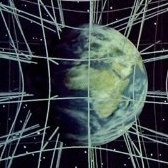Leaderboard
Popular Content
Showing content with the highest reputation on 09/06/21 in all areas
-
I think this is a matter of internal consistency. We know from experiment and observation that nature obeys certain fundamental symmetries - for example, from observing and playing around with a large number of particle interactions, and even before making any specific models, we will eventually notice that all these interactions are subject to what’s called CPT symmetry. Any model of particle physics we now develop must therefore reflect this symmetry (the current Standard Model does this). As it turns out, CPT symmetry implies that space time must have a certain local symmetry as well, called Lorentz invariance (this can be formally proven, and has been experimentally shown to high accuracy). This symmetry is not compatible with a Euclidean geometry - you need something that has different signs in the time and space parts of the metric, making it non-Euclidean. So you need non-Euclidean space time for internal consistency, or else there would be a conflict between particle physics and macroscopic physics. Poincare could not have known this, since the necessary observational data was not yet available to him. The other thing is that the strong and weak interactions are not invariant under rescaling, so shrinking and expanding rulers are not even an option. However, it should be noted that, given non-Euclidean space-time, you can describe gravity in ways that don’t use curvature - notably with a concept called torsion. Einstein himself tried this, but failed for technical reasons. Only in the 1960s was a functioning model along these lines developed; it’s called Møller gravity. Spacetime here is completely flat, and gravity is due to torsion alone. The physical predictions are the same as in standard GR, because they obey the same symmetries. Which, of course, further underlines my earlier point that the behind the scenes machinery of GR - such as curvature tensors - does not necessarily map into any element of reality. You can do away with curvature completely, and yet still obtain the same gravitational physics through other geometrical means. What both models share are again the underlying symmetries.2 points
-
I am using formalism in the mathematical sense; ie akin to the ‘language’ used to write down the model. Usually this will be the language of tensor calculus and differential geometry. You need to choose a formalism to write down your model, otherwise you cannot extract any predictions from it - just as you need to choose a language when you write a forum post here. What I am attempting to point out is that this choice is not unique. Most texts on GR will use tensor calculus as their formalism, so you will see it written in terms of the metric, plus a couple more tensor fields built from the metric. But there are other choices that use completely different objects, yet still arrive at the same physical predictions. To pick just one example, you can write down GR using the Penrose spinor formalism - the basic object is now a rank-4 spinor, and the field equations become a constraint on that spinor. Or you could use the ADM formalism, which uses conjugate momenta. And so on. They all describe the same physics, but using very different languages. So my point is simply this - if the “machinery behind the observable” is not unique, and to some degree interchangeable, in what sense then can this formalism itself be ontologically ‘real’? It’s like language - you can say ‘table’ or ‘Tisch’ or โต๊ะ, but these are just conventions. What’s ontologically real is the object in your room which you can touch and bang your knee against, not the many different words. Or have you ever banged your knee on a word What I wish to do is carefully distinguish between the observables of a model, and its formalism. The observables directly map to elements of physical reality, so they are ‘real’ in that sense. For GR that would be the outcome of measurements taken on test particles with clocks and rulers - GR is simply a set of correlations between gravitational sources, and such outcomes. The same is not true for the specific formalism, though - there are different ways to obtain these correlations, and the computational devices employed in doing so do not uniquely map into anything in the real world. Only observables do. This is just my current view on this matter, which may evolve and change as I continue learning and pondering. I do not claim that it absolutely can’t be read any other way. One notable problem with this view of mine is that there is at least one computational device that is shared by all formalisms which I am aware of - space-time. Does that mean that space-time is ontologically real, even if it can’t be observed? Is it possible to formulate GR without recourse to any concept of space-time? And what about things like the Ahoronov-Bohm effect? What are the implications? I shall continue to ponder. To finish with a quote by George Box: “ All theories are wrong, but some are useful.” P.S. What have all these disparate formalisms in common, that enables them to represent the same physics? The answer is that they capture the same symmetries - local Lorentz invariance, and global diffeomorphism invariance. For example, both tensors and spinors are representations of the Lorentz group. So really, the most fundamental thing that models and reality have in common - why they can map into each other - are symmetries. The same is true of course in quantum physics.2 points
-
1 point
-
I thought that was why you put them in quotation marks, which I included in my extract.1 point
-
No. 😁 I was interested to learn that gravity can be described without a curvature tensor (Môller gravity, with torsion) and I hope those more capable might explore the epistemological implications. My hope is that scientists generally do not have to carry the burden of "math is reality," at least not the way Max Tegmark does.1 point
-
! Moderator Note I think you've been given far too much leeway in the past. Your threads don't get many replies, and it seems you've grown a very thin skin when your concepts are challenged. You need to abide by the rules here, or you need to stop posting, it's that simple. We'd hate to lose you, but you can't sweep mistakes or concerns under the rug anymore. From now on, you need to address concerns and reply in a way that facilitates meaningful discussion, and the staff will be the arbiters of what is meaningful in every case.1 point
-
Just a couple of thoughts for all to ponder for now . . . Can you bear one more Einstein quote? Just one last time, I promise. What Einstein is telling us here, and as is well known to philosophers and historians of science, is that scientists--with the best of intentions--frequently misdescribe what it is that they are doing. If it's any consolation, don't feel too bad; everybody else in the human race does it too, at least from time to time. I very humbly and respectfully suggest that's what's been happening here, at least to some extent. Whenever some annoying philosophical asshole (e.g. me LOL) gatecrashes the physicists party and asks questions about truth and reality, what we hear is something like the following (paraphrased with elements picked from various comments throughout the thread, either explicitly stated or implicitly implied): "Oh, don't be silly. You obviously know nothing about physics. We just construct models which can be regarded as simply tools, and describe behavior. We don't use words like truth and reality and belief, or if we do, we hedge them with 'scare quotes'. Our models (which we prefer to the word theory) are simply instruments, not the kinds of things that can even be true or false. Science does not address questions such as "What is the fundamental nature of gravity? or the fundamental nature of anything else; we leave that to metaphysicians and philosophers and other degenerates. We simply describe behavior; physics is not in the business of going behind the scenes and offering explanations to 'why' questions." (Having fun here, folks. Don't take this too seriously ) But, but . . . after that annoying philosophical asshole has been given a good beating and ignominiously thrown out the door head first, the physicists crawl out their shells again, look around nervously, and revert to their normal modes of speech. Now, I've only been up for an hour or so this morning. Over a nice breakfast and a mug of coffee I enjoyed Prof. Don Lincoln's (see earlier in thread) lecture 18, "The Case for Cosmic Inflation". Prof. Lincoln ends the lecture with this: "Ok, so that's the story of inflation which is most certainly not a theory that you should believe outright. But it's a theory that is a very good candidate to explain the observed uniformity of matter in the universe and the flatness of space. It might be true, and if it is, it will definitely make the news." After that, I had a quick browse through your wonderful forums here. First thing to catch my beady reptilian eye was a passage from Wiki which @TheVat posted a few hours ago in the thread "Why does it seem to us that the universe is expanding where there is no gravity" . . . "Since the 1990s, dark energy has been the most accepted premise to account for the accelerated expansion. As of 2021, there are active areas of cosmology research aimed at understanding the fundamental nature of dark energy..." Conclusion: I very humbly (grovel, grovel) suggest that comments such as those above are perfectly typical of the way physicists speak . . . when pests like me aren't around LOL.1 point
-
I’ve heard this said by different people and more than once recently: Republicans right now are the biggest threat to the survival of democracy in the US It’s nihilistic1 point
-
It's almost as if "It's not in the rules it's allowed". That's a path to more criminality and disorder. We generally act in the spirit of our laws, which are not necessarily specific, and the GOP seems to be mining into that type of subversive abuse of principles society stands on to operate with some degree of amicable consensus.1 point
-
I have less of a problem with infinity then I do with finite, and edges and flat Earths etc.1 point
-
Yes @joigus, I lurk in the shadows and follow proceedings here whenever I get the opportunity At present I live in the jungles of Thailand, having recently been ordained as a monk, and do not have access to anything other than an old mobile phone with spotty and slow internet access, so I’m not really in a position to participate in discussions. It’s just too slow and painful to type this way. I will return once I get access to better infrastructure - perhaps some time next year. Satellites in orbit are in free fall - place an accelerometer into them, and it will show exactly zero at all times. No proper acceleration -> no force acting on them. And yet they don’t fly off into space, but remain gravitationally bound into their elliptical orbits. Clocks in them are also dilated wrt to far-away reference clocks, which is also a gravitational effect. Thus, no force, but still gravity. Newtonian forces are simply bookkeeping devices, and as such they often work well - but only in the right context. Their nature is descriptive, but not ontological. They are not very physical either, given that they are assumed to act instantaneously across arbitrary distances. The strong, weak, and EM interactions aren’t ‘forces’ in that sense at all, since they work in very different ways. They are only sometimes called ‘forces’ by convention, for historical reasons. They ultimately arise through the breaking of symmetries, with the particles involved being irreducible representations of symmetry groups. Finally, it should be noted that physics makes models, that’s what it sets out to do - and as such it is always descriptive rather than ontologically irreducible. So, asking whether gravity “really is” A or B, or whether A or B are “true” is fairly meaningless, since both A and B are descriptions of reality, but not reality itself. Like maps of a territory. The correct question is thus whether models A and/or B are useful in describing gravity, and in what ways and under what circumstances they are useful. So - Newtonian gravity is sometimes useful, but GR is more generally useful, as it gives more accurate predictions for a larger domain. So for now the best answer to “what is gravity” that we have is a purely descriptive one: it’s geodesic deviation, and thus a geometric property of space time. To put it flippantly, it’s the failure of events to be causally related in a trivial manner. Future advancements may upend this picture in the high-energy domain, perhaps radically. We’ll see. I’m sorry I can’t contribute much at the moment, but I’ll leave you with the above thoughts. I could have written much more, but it’s too much of a pain on a small mobile phone screen.1 point
-
I took two lines to explain one subtraction. The feedback was "what's the connection?" I call that trolling.-1 points









